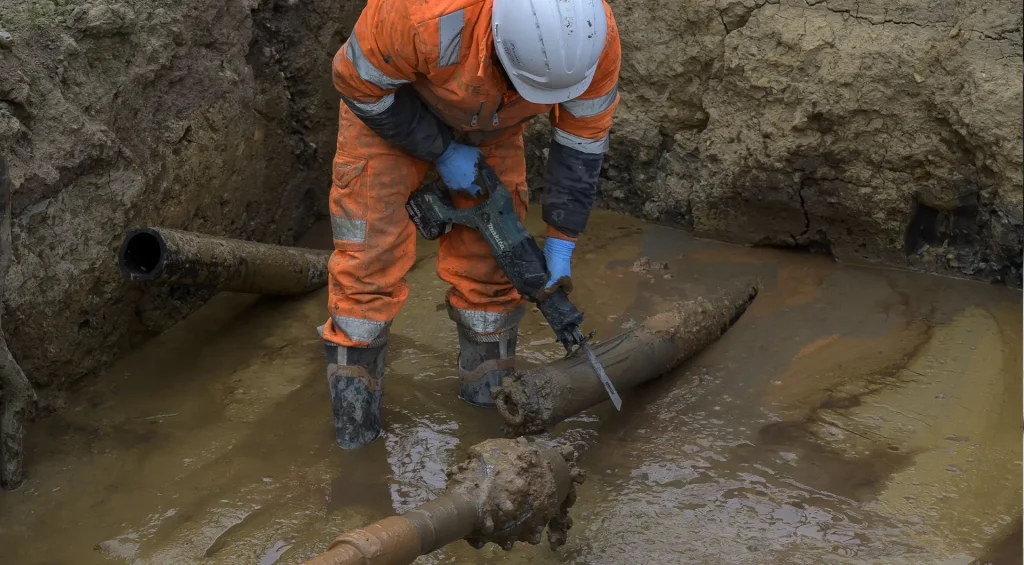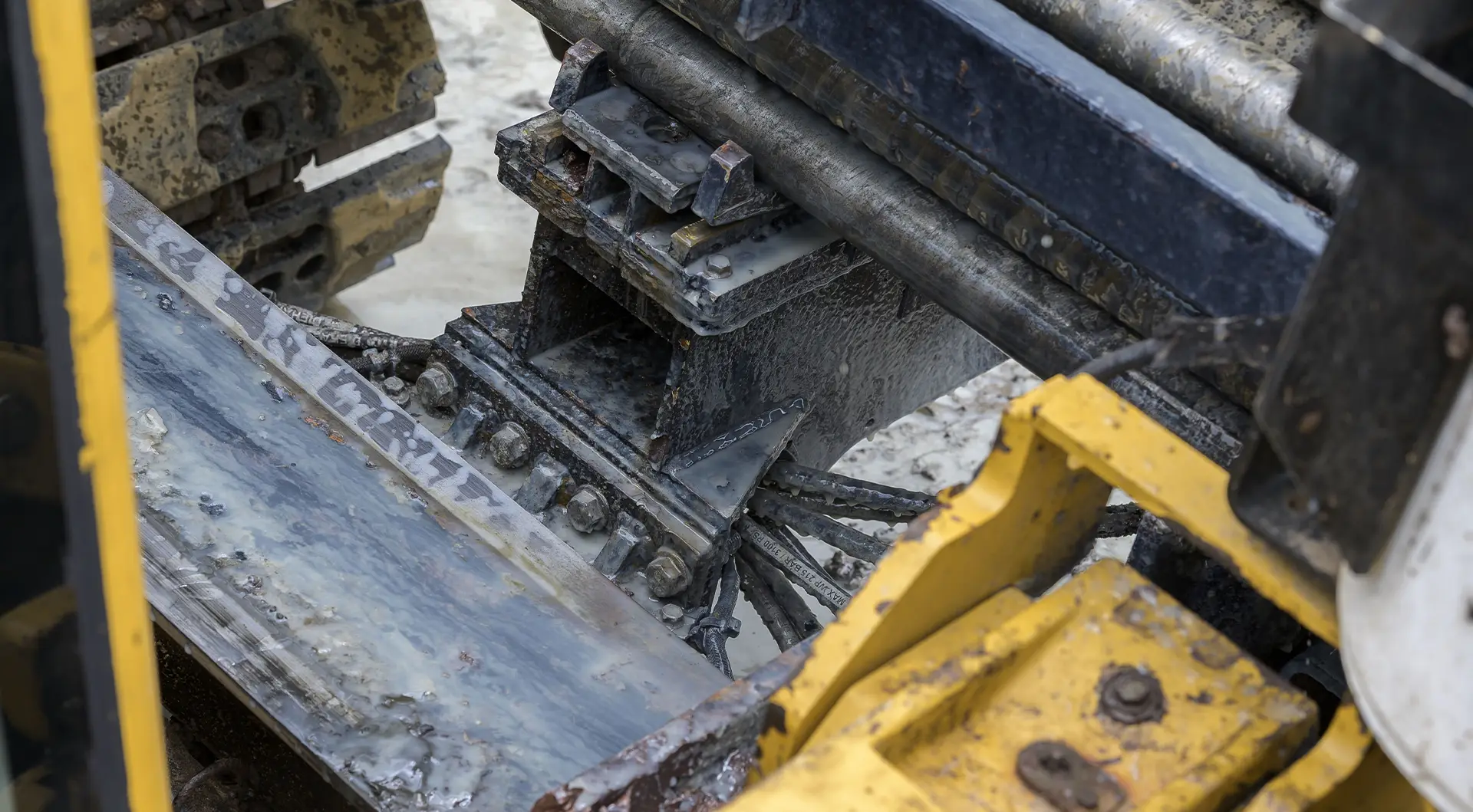Pipe jacking and directional drilling are distinct trenchless methods used for installing underground utilities with minimal surface disruption. Both techniques allow pipelines to be installed without open trenches, but they differ significantly in their execution and application.
While both methods provide trenchless solutions for utility installation projects, choosing between pipe jacking and directional drilling depends on factors such as pipe material, installation distance, and alignment requirements. By understanding their differences, this ensures the right technique is selected for your specific project needs based on suitability.
The following blog examines the key pipe jacking vs directional drilling differences. We also examine and emphasise the benefits of using either one of these trenchless techniques to install utility service lines when compared with traditional, open-cut trenching methods.
To find out more about pipe jacking vs directional drilling read on ➡
There are various key differences between these two trenchless methods when it comes to execution, application, and suitability. The following comparative analysis between pipe jacking vs directional drilling will help you to understand what’s needed for your installation project.
Pipe jacking is a trenchless method where prefabricated pipes are hydraulically pushed through the ground from a launch shaft while an excavation head removes soil at the front. This trenchless technique is highly precise but follows a strictly straight path, making it ideal for short-to-medium distances under roads, railways, and dense urban areas.
Limitations: Limited to straight paths, and requires a launch and reception shaft.
Directional drilling, also commonly known as horizontal directional drilling (HDD), involves drilling a pilot borehole along a predetermined, slanted, curved, or straight path. The borehole is then gradually enlarged before pulling the pipeline into place. This trenchless method is best suited for longer-distance pipework installations, particularly under highways, rivers, or environmentally sensitive areas, where flexibility in the route’s trajectory is required.
Limitations: Higher risk of deviation from the pre-planned path, and not ideal for large-diameter rigid pipes which cannot flex to follow the drilled bore path.
In summary, pipe jacking is a mechanical excavation process where pipes are pushed forward using hydraulic jacks, while directional drilling is a borehole drilling process that creates a curved or straight path before pulling the pipe through. In short, pipe jacking is a pipe-pushing method, while directional drilling is a boring-and-pulling method. These two trenchless techniques serve similar purposes but with different methods, capabilities, and limitations.
While both techniques minimise surface disruption, pipe jacking is best for straight, controlled installations of rigid pipes, whereas directional drilling is ideal for long-distance, flexible routing beneath obstacles like roads, railways, and any other surface infrastructure.
For the benefits of both trenchless vs traditional trenching methods, read on ➡

When it comes to choosing trenchless methods over traditional open-cut trenching, there are several advantages — making both pipe jacking and directional drilling preferable solutions for installing service lines for water, gas, sewers, electricity and telecoms networks.
The key benefits of these two trenchless techniques include:
Overall, trenchless methods offer more efficient, cost-effective, and eco-friendly alternatives to traditional trenching, especially in urban and environmentally sensitive areas. These methods are also much safer for everyone involved, reducing liabilities and costs all round.
So having established that both pipe jacking and directional drilling as trenchless installation methods are far more cost-effective than traditional open-cut trenching, how do these two techniques compare cost-wise to each other? A cost comparison depends on several factors, including pipe size, soil conditions, installation length, and project complexity.
Here’s a breakdown of the main cost drivers:


For short, precise installations in tough soils, pipe jacking is often more expensive per metre but necessary for large-diameter, rigid pipes and high-precision projects. For long-distance, flexible pipe installations, directional drilling is usually cheaper and more efficient. In some cases, however, it can be less about cost and more about suitability based on project needs.
As industry leaders in trenchless solutions, our experienced engineers can advise on the most efficient and cost-effective method of completing your underground installation, avoiding the unnecessary and messy disturbance of traditional open-cut trenching.